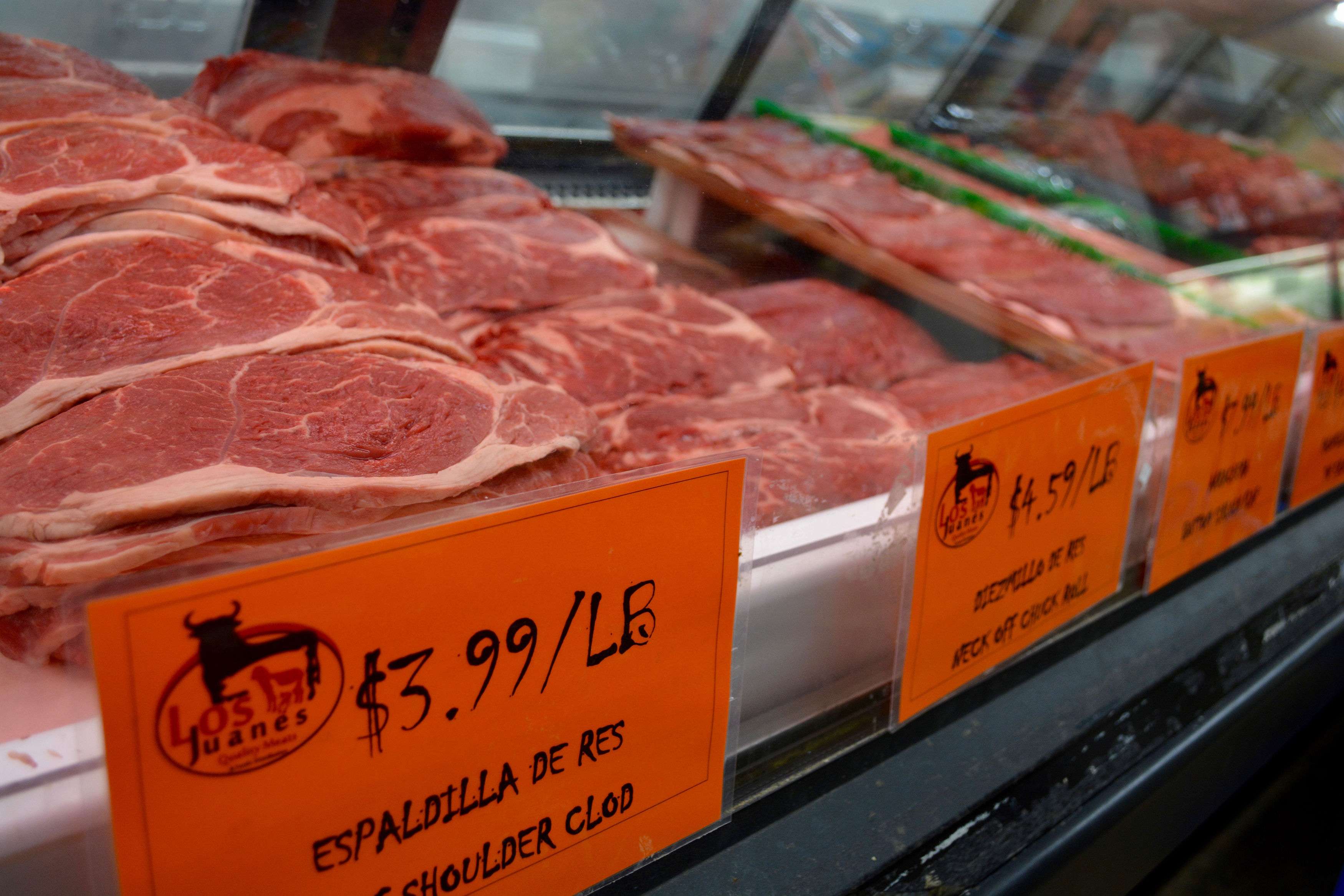Discover the Finest Option of Cuts From Regional Meat Market
In a period where the origins of our food are more significant than ever, exploring the finest option of cuts from your neighborhood meat market supplies an engaging story of high quality and stability. These markets not only promise unequaled quality and taste but also provide understandings right into the subtleties of various primitive and sub-primal cuts.
Advantages of Local Meat Markets
Neighborhood meat markets supply countless advantages that are coming to be significantly substantial in today's food landscape. Most importantly, they provide consumers with access to fresher and higher-quality meat. Because the supply chain is shorter, local meat does not endure lengthy transport times, protecting its quality and nutritional value. This close closeness to the resource also allows for enhanced traceability, offering consumers with transparency about where and just how the meat was produced.

Furthermore, regional meat markets contribute to the economic vitality of communities. By sustaining neighborhood manufacturers, customers aid receive small companies and foster economic growth within their region. This economic support can cause task production and aid maintain the one-of-a-kind personality of neighborhood areas.
Comprehending Various Meat Cuts
A fundamental element of making enlightened acquiring choices at regional meat markets is understanding the numerous cuts of meat available. Each cut provides unique tastes, structures, and cooking capacities, making it necessary to identify just how they vary. Mostly, meat is classified into primal, sub-primal, and retail cuts. Primal cuts are the bigger areas at first divided from the carcass, such as the loin, rib, and chuck. These are additional divided right into sub-primal cuts, which at some point damage down right into retail cuts, the familiar selections found at the marketplace.
For example, from the beef primitive cut, the loin, one can obtain sub-primal cuts like tenderloin, bring about retail choices such as filet mignon. The rib primitive cut includes sub-primal ribs, generating retail choices like ribeye steaks. Recognizing these distinctions aids in picking cuts that align with cooking requirements and individual choices.
Furthermore, cuts differ in tenderness and fat material, affecting their suitable cooking techniques. bagley farms meat market edwardsville il. Harder cuts like brisket gain from slow-moving cooking, while tender cuts like sirloin are matched for barbecuing. By grasping these nuances, consumers can enhance their culinary experiences and anchor maximize their meat purchases

Expert Tips for Choosing Meat
Picking the suitable cut of meat requires not just knowledge of the numerous alternatives available however also an eager understanding of quality indications that specialists utilize to make their choices. A well-marbled cut usually guarantees boosted flavor and tenderness, as the fat thaws during food preparation, enriching the meat's structure and preference.
One more critical element is the meat's structure. Specialist advice also involves taking a look at the packaging, if appropriate.
Last but not least, comprehending the credibility and sourcing practices of your regional meat copyright can supply understandings right into the high quality and honest requirements of the meat. Engaging with experienced butchers can supply beneficial referrals tailored to particular culinary needs, ensuring a superior eating experience.

Finest Seasonal Options
When it involves choosing the best seasonal cuts of meat, recognizing the natural rhythms of animals and farming methods can greatly boost your dining experience. Seasonal options are influenced by factors such as the reproducing cycles of animals and the schedule of pasture. Springtime lamb is specifically sought after for its inflammation and delicate flavor, owing to the lush pastures that lambs forage on during these months. Autumn is a superb time for beef, as cattle have actually spent the summertime months grazing on nutrient-rich yards, resulting in tasty, marbled meat.
Selecting seasonal cuts not only ensures quality but additionally lines up with the peak quality of different meats. Pork, typically healed and preserved in the chillier months, uses an abundant selection of cuts like pork and bacon throughout winter months, when pigs are butchered after being plumped on fall harvests. Poultry, on the various other hand, is frequently at its finest during late spring and early summer, when hens have developed on a diet of fresh grains and greens.

Supporting Lasting Practices
Welcoming sustainable techniques in meat production is important for advertising ecological health and guaranteeing the longevity of regional communities. In the context of local meat markets, sustainability includes a commitment to moral farming techniques, lowering carbon impacts, and sustaining biodiversity. By prioritizing these practices, manufacturers not just go to this web-site boost the top quality of their offerings yet additionally add favorably to their communities and the earth.
Neighborhood meat markets play an essential role in fostering sustainable farming by sourcing products from farms that carry out environmentally friendly approaches. These might include rotational grazing, natural feed, and integrated insect monitoring, which jointly minimize environmental influence and advertise pet well-being. By picking to sustain such markets, customers can look at this website directly influence the need for sustainably elevated meat, urging even more manufacturers to embrace these methods.
In addition, sustainable techniques in meat manufacturing can substantially reduce the market's environmental impact. Decreasing source use and waste generation with innovative farming strategies can lead to significant decreases in greenhouse gas discharges. This is vital in attending to climate modification and maintaining natural deposits for future generations. Sustaining lasting practices not only profits the environment but likewise lines up with a broader commitment to accountable usage and manufacturing.
Verdict
Neighborhood meat markets use unparalleled benefits in terms of top quality, freshness, and sustainability. Sustaining local meat markets not only advertises sustainable farming techniques however also adds to a much more educated and satisfying cooking journey.